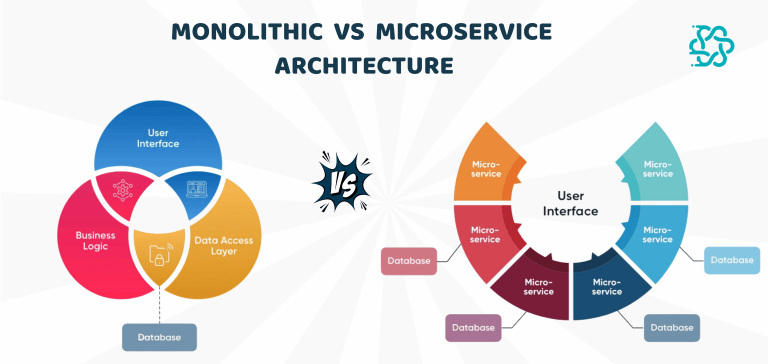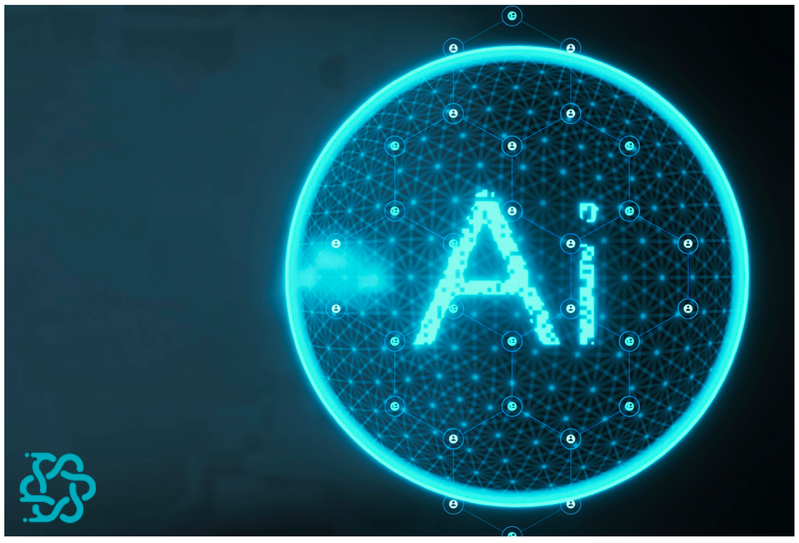Microservices vs. Monolithic Architecture: A Comprehensive Guide

In the ever-evolving world of software development, the debate between microservices and monolithic architecture continues to be a hot topic. Both approaches have their strengths and weaknesses and choosing the right one can significantly impact the success of your project. In this blog, we’ll explore the key differences between microservices and monolithic architectures, their advantages and disadvantages, and how to determine which is best suited for your project.
Understanding the Basics
Monolithic Architecture: In a monolithic architecture, the entire application is built as a single, unified unit. All components, such as the user interface, business logic, and data access layer, are tightly coupled and run as a single service. This approach has been the traditional method of building applications for many years.
Microservices Architecture: Microservices architecture, on the other hand, involves breaking down an application into smaller, independent services. Each service is responsible for a specific business function and can be developed, deployed, and scaled independently. These services communicate with each other through well-defined APIs.
Key Differences
Development and Deployment:
Monolithic: Development is straightforward as everything is part of a single codebase. However, deployment can be complex, as even small changes require the entire application to be redeployed.
Microservices: Development can be more complex, as each service is developed independently. Deployment is more flexible, allowing individual services to be updated and deployed without affecting the entire application.
Scalability:
Monolithic: Scaling a monolithic application typically involves duplicating the entire application across multiple servers, which can be resource-intensive and inefficient.
Microservices: Each service can be scaled independently based on its specific needs, making microservices more efficient in terms of resource usage.
Fault Isolation:
Monolithic: A failure in one part of a monolithic application can potentially bring down the entire system, as all components are tightly coupled.
Microservices: In microservices, faults are isolated to individual services. A failure in one service does not necessarily affect the others, improving overall system resilience.
Technology Stack:
Monolithic: Typically uses a single technology stack for the entire application, limiting flexibility in choosing the best tools for specific tasks.
Microservices: Allows for a polyglot approach, where different services can be built using different technologies best suited to their requirements.
Complexity:
Monolithic: Simpler to develop initially, but as the application grows, the codebase can become large and unwieldy, making maintenance challenging.
Microservices: More complex to set up and manage due to the need to handle service-to-service communication, distributed data management, and other factors.
Advantages of Monolithic Architecture
Simplicity: Easier to develop, test, and deploy initially, especially for smaller projects.
Performance: No network latency between components, as everything is contained within a single process.
Consistency: Ensures consistent data access and business logic, as all components share the same codebase.
Advantages of Microservices Architecture
Scalability: Enables fine-grained scaling of individual services based on demand.
Flexibility: Allows teams to choose the best technology for each service and work independently on different parts of the system.
Fault Tolerance: Improves system resilience by isolating failures to individual services.
Faster Development: Teams can develop and deploy services independently, speeding up the release cycle.
Disadvantages of Monolithic Architecture
Scalability Limitations: Scaling the entire application can be inefficient and costly.
Maintenance Challenges: As the application grows, the codebase can become difficult to manage and maintain.
Risk of Failure: A bug in one part of the application can potentially bring down the entire system.
Disadvantages of Microservices Architecture
Complexity: Requires careful management of service communication, data consistency, and deployment pipelines.
Overhead: Introduces network latency and potential performance overhead due to service-to-service communication.
Development Challenges: Teams need to manage multiple services, which can increase the overall complexity of the development process.
When to choose Monolithic Architecture
Small Projects: For smaller applications with limited scope and complexity, a monolithic approach may be more straightforward and cost-effective.
Tight Deadlines: If time-to-market is critical, a monolithic architecture can be quicker to develop and deploy.
Limited Resources: Teams with limited resources may find it easier to manage a single codebase rather than multiple services.
When to Choose Microservices Architecture
Large, Complex Applications: For applications with multiple distinct business functions, microservices can help manage complexity and scale effectively.
Scalability Requirements: If the application needs to handle varying levels of demand across different functions, microservices provide more efficient scaling options.
Independent Teams: When development teams are organized around different business domains, microservices allow for more autonomy and faster development cycles.
Conclusion
Choosing between monolithic and microservices architecture depends on the specific needs of your project. While monolithic architecture offers simplicity and ease of development for smaller projects, microservices provide scalability, flexibility, and fault tolerance for larger, more complex applications.
Ultimately, the right choice will depend on factors such as project size, team structure, scalability needs, and long-term maintenance considerations. Whether you opt for a monolithic or microservices architecture, the key is to build a system that meets your current needs while allowing for future growth and adaptability.
At TechRover™ Solutions, we specialize in crafting tailored software architectures that perfectly align with your business goals. Whether you’re looking to streamline your operations with a monolithic approach or seeking the flexibility and scalability of microservices, our team of experts is here to guide you every step of the way.



Pingback: Build An MVP With Techrover: Your Guide To Success